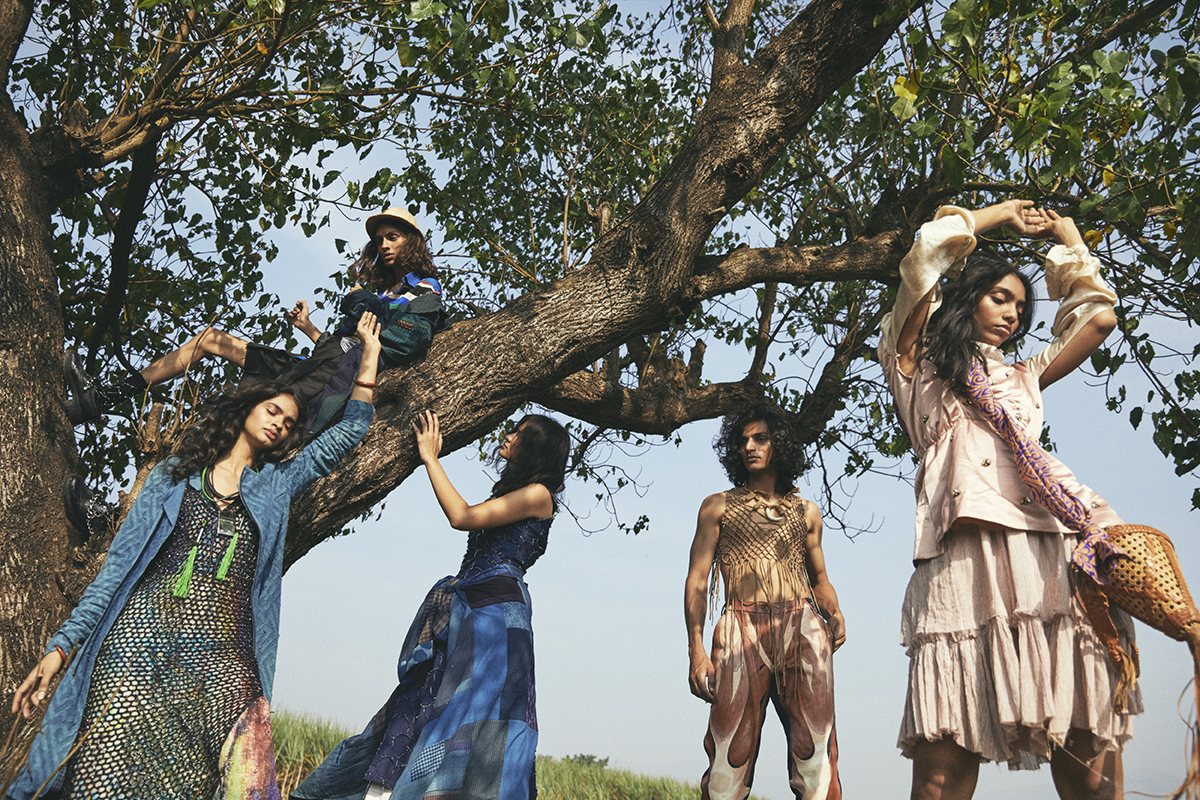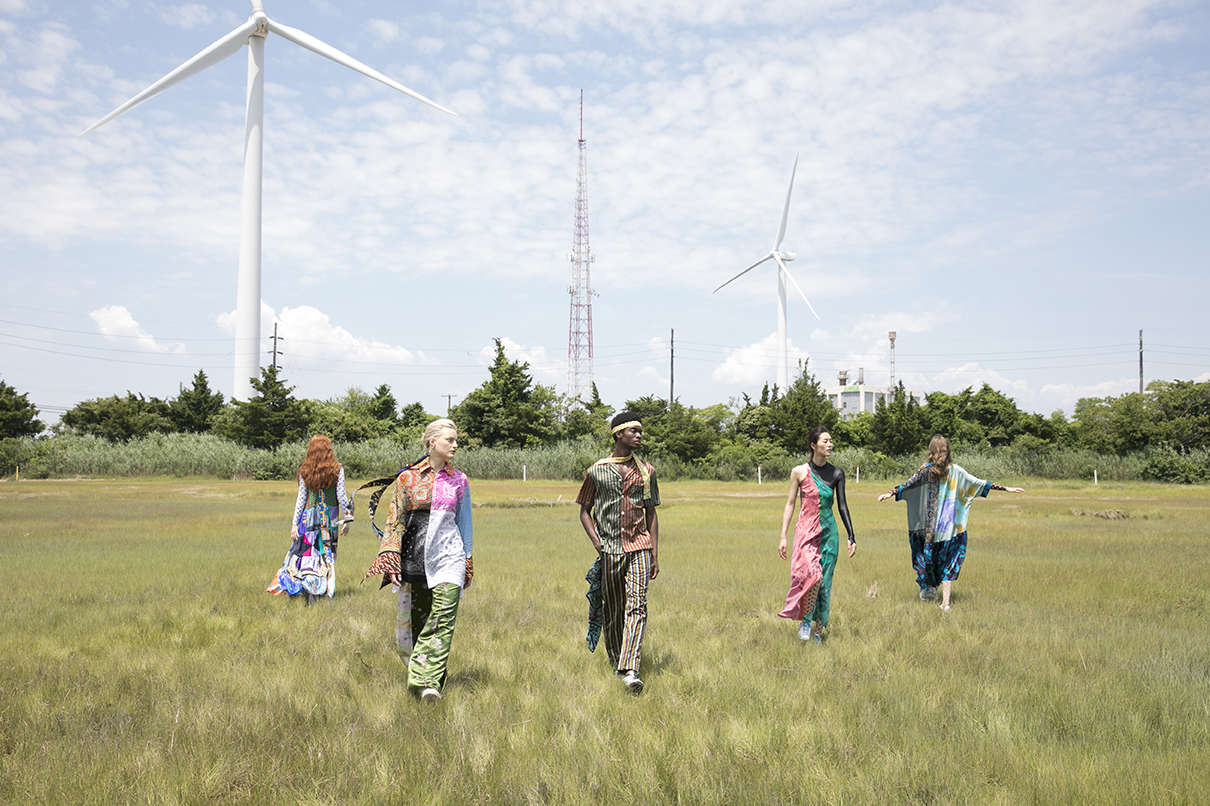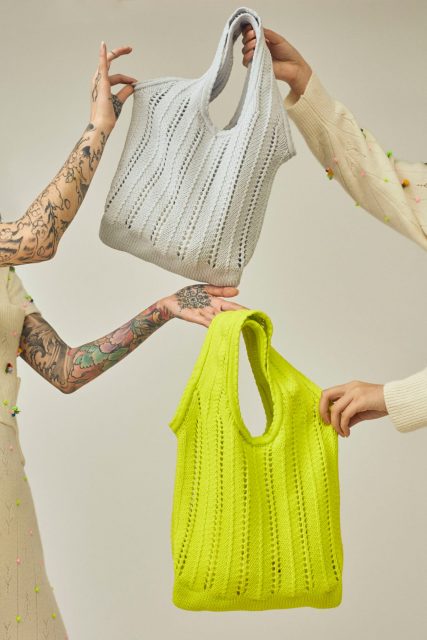Sustainable fashion is a term that’s increasingly used (and overused, often with little to back it up) these days, as we all become ever more aware of the serious environmental impact of our clothes — with the industry responsible for a shocking four to 10 per cent of global greenhouse-gas emissions every year. But what does sustainable fashion actually mean?
In short, it’s an umbrella term for clothes that are created and consumed in a way that can be, quite literally, sustained, while protecting both the environment and those producing garments. That’s why cutting CO2 emissions, addressing overproduction, reducing pollution and waste, supporting biodiversity, and ensuring that garment workers are paid a fair wage and have safe working conditions, are all crucial to the sustainability matrix.
Considering the number of factors involved, there are still too few brands out there currently tackling all of these complex issues, and even those that are will admit that there’s always room for improvement. This means simply shopping for items labelled ‘sustainable’ is not enough; we need to completely rethink our purchasing habits and the way we consume clothes.
So, if you want to ensure your wardrobe is as sustainable as possible moving forward, here’s everything you need to know.
Buy less and buy better
It may be a cliche, but the mantra “buy less and buy better” is key when you consider that a staggering 100bn garments are being produced globally every year. Before making a purchase, sustainability consultancy Eco-Age’s chief brand officer Harriet Vocking advises that you ask yourself three all-important questions: “What are you buying and why? What do you really need? Will you wear it at least 30 times?”
Invest in sustainable fashion brands
Buying better can also mean supporting designers who are promoting sustainable practices, including the likes of Collina Strada, Chopova Lowena and Bode, who all use upcycled textiles in their designs. Narrowing your search for specific items can also help, whether that’s seeking out brands producing activewear more sustainably (such as Girlfriend Collective and Indigo Luna), swimwear (including Stay Wild Swim and Natasha Tonic) or denim (Outland Denim and Re/Done).
Shop secondhand and vintage
With secondhand and vintage now increasingly accessible thanks to sites such as The RealReal, Vestiaire Collective and Depop, consider buying pre-loved items when looking to add to your wardrobe. Not only will you extend the life of these garments and reduce the environmental impact of your wardrobe as a result, you can also find one-of-a-kind pieces that no one else will own. Look to the likes of Rihanna and Bella Hadid — both vintage aficionados — for inspiration here.
Try renting
Instead of buying a new dress for that wedding or BBQ this summer (Covid restrictions permitting, of course), it’s now easier than ever to rent something to wear instead. According to one study, an astonishing 50m garments are bought and worn just once every summer in the UK alone — a dirty habit we need to quickly ditch, given that the equivalent of one garbage truck of textiles is burned and landfilled every second.
Avoid greenwashing
As consumers become ever more aware of their environmental footprint, greenwashing — brands using vague, misleading or false claims to suggest it’s more eco-friendly than it actually is — is becoming increasingly prevalent. Look beyond buzzwords such as ‘sustainable’, ‘eco-friendly’, ‘conscious’ and ‘responsible’ to see if brands have detailed policies to back up their claims.
Know your materials
Understanding the impact of materials is crucial when it comes to making more sustainable purchases. A good rule of thumb is to avoid virgin synthetics such as polyester — which makes up 55 per cent of clothes globally — as these are derived from fossil fuels and take years to break down. Not all natural materials are made the same: organic cotton, for example, uses significantly less water than conventional cotton and doesn’t use harmful pesticides.
Look for certifications from the Global Organic Textile Standard (for cotton and wool), Leather Working Group (for leather) and Forest Stewardship Council (for viscose) to ensure the materials used to make your clothes have a lower impact on our planet.
Ask who made your clothes
With the pandemic highlighting the extreme difficulties faced by garment workers around the world, it’s essential that the people who make our clothes are paid a fair wage and have safe working conditions. Seek out brands who openly disclose information about their factories and their policies around wages and working conditions.
Look for scientific targets
To find out if brands are serious about reducing their environmental impact, a good place to start is checking whether they have committed to scientific targets. Brands who have signed up to the Science Based Targets Initiative, for example — which includes Gucci-owner Kering and Burberry — must have goals for reducing CO2 emissions that are in line with the Paris Agreement.
Support brands who have a positive impact
Eco-minded brands such as Mara Hoffman and Sheep Inc are starting to consider how fashion can have a positive impact on the environment rather than just reducing its impact. Regenerative agriculture — farming practices such as no-tilling and growing cover crops — is a growing trend within fashion that aims to restore soil health and biodiversity.
Watch out for harmful chemicals
Hidden chemicals that are used to treat our clothes are a serious concern, polluting local waterways and posing a risk to garment workers. Keep an eye out for the Made in Green by OEKO-TEX and Bluesign certifications, which set out requirements for chemical usage during the manufacturing process.
Reduce your water footprint
Given that the production of textile uses an astonishing 93bn cubic metres of water annually — the equivalent to 37m Olympic swimming pools — we should all be more conscious about the water footprint of our clothes. As mentioned previously, organic cotton uses significantly less water than conventional cotton (91 per cent less, according to one study), while the use of low-water dyes also reduces water consumption.
Be conscious about vegan fashion
While animal-derived materials such as leather and wool come with environmental and ethical concerns, vegan alternatives, which often contain synthetics, can also be harmful for our planet. Luckily, there are exciting innovations entering the market, such as Bolt Threads’ Mylo leather, made from mycelium — the roots of fungi — which has already been adopted by Stella McCartney.
Take care of your clothes
Extending the life of your clothes is crucial when it comes to lowering the environmental footprint of your garments, and ensuring they don’t end up clogging landfill sites after just one or two wears. Ensure your clothes last as long as possible by not overwashing them (which will also lower your CO2 emissions and water consumption), as well as repairing them instead of throwing them out.
Avoid microplastic pollution
As it’s difficult to avoid synthetics altogether (nylon and elastane are still required in activewear and underwear to get that all-important stretch), washing clothes can release thousands of microplastics into our waterways and oceans, causing harm to marine life that ingest the tiny particles. Luckily, there’s a simple solution: investing in a microplastics filter such as a Guppyfriend washing bag, in which you can put your synthetic garments or a Cora Ball that you put in with your laundry.
Ensure your clothes have a second life
When clearing out your closet, being conscious about how you dispose of your clothes will help stop them from ending up in landfill. Re-selling your clothes or organising a clothes swap is the best way to ensure they’ll have a second life, as well as donating to charities and organisations that are looking for used clothing. For worn-out pieces that can no longer be repaired for reused, look for recycling schemes specifically for those items, where possible.
Editor
Emily ChanCredit
Lead image: Justin Polkey







